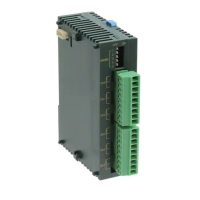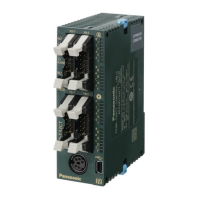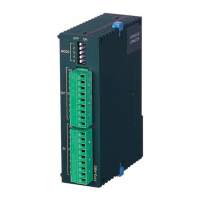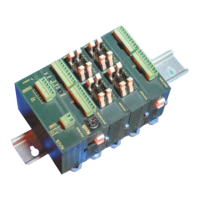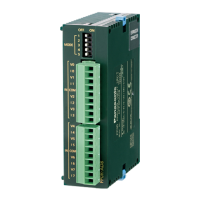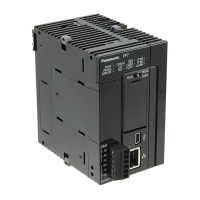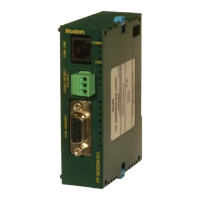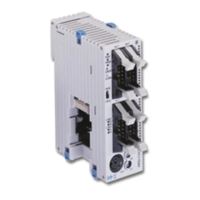Specifications
12-4
12.2 Allocation of Memory Areas
12.2.1 When Using Pulse Output Table Setting Mode
Control unit
Channel no.
Input/output contact number used
Memory area
used
CW or
Pulse
output
Sign
output
Devia-
tion
counter
clear
output
Home
input
(Note1)
Near
home
input
(Note 2)
Over
limit
input
(Note 3)
J-point
positioning
start input
Busy
flag
Elapsed
value
area
Indepe-
ndent
CH0
Y0 Y1 Y2 X2 (Y850)
(Y860)
X0 (Y808)
(Note 4)
CH1
Y3 Y4 Y5 X5 (Y851)
X1 (Y809)
CH2
Y8 Y9 YA X6 (Y852)
X3 (Y80A)
CH3
YB YC YD X7 (Y853)
X4 (Y80B)
Linear
inter-
(Note 1)
CH0
X-
axis
Y0 Y1 Y2 X2 (Y850)
-
(Y808)
(Note 4)
Y-
axis
Y3 Y4 Y5 X5 (Y851)
(Y809)
CH2
X-
axis
Y8 Y9 YA X6 (Y852)
(Y80A)
Y-
axis
YB YC YD X7 (Y853)
(Y866)
(Y80B)
(Note 1): Even when setting the linear interpolation, the interpolation operation is not performed for the home return.
Execute the operation for X axes and Y axes separately.
(Note 2): The near home input will be valid when arbitrary inputs are allocated and the output relays indicated in the
above table turn ON.
(Note 3): The over limit input (+) and over limit input (-) will be valid when arbitrary inputs are allocated and the output
relays indicated in the above table turn ON. The I/O numbers in the upper rows (Y860 to Y866) in the above
table are over limit input (+), the I/O numbers in the lower rows (Y861 to Y867) are over limit input (-).
(Note 4): The elapsed values are stored in the axis information area of the positioning memory. They can be read by
user programs using the F384 instruction.

